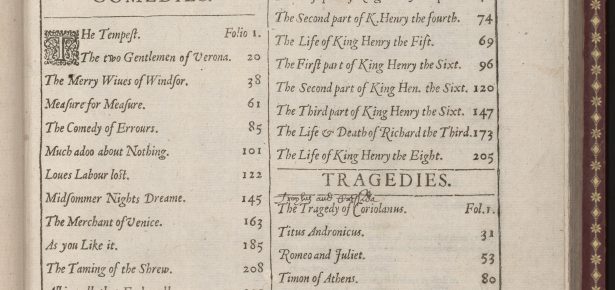
John Churchill, first Duke of Marlborough – and husband to Sarah Churchill, sometime favourite of Queen Anne – allegedly claimed that he knew no history except what he had read in Shakespeare. Samuel Taylor Coleridge championed Shakespeare’s ‘Histories’ and suggested it would be ‘a fine national custom to act such a series of dramatic histories in orderly succession every Christmas holiday’.[1] Even today, our understanding of historical monarchs such as Richard III and Henry V is mediated through Shakespeare’s plays and the memory of stage or film productions that we have seen. Although the chronicle histories on which Shakespeare drew – and often substantially reshaped – were much more familiar to his own audiences than to us now, early modern theatregoers and play-readers also looked to dramatic histories to inform their own sense of the past. Ben Jonson satirizes this practice in his play The Devil is an Ass. Fitzdottrell claims he is not ‘cunning [i.e. knowledgeable] i’the chronicle’, but instead learns his history ‘from the playbooks’, because he ‘think[s] they are more authentic’ (2.4.12-14).
While Shakespeare wrote primarily for the stage, his works survive in large part because they were printed. How these plays were presented in print has had a huge impact on how they were (and continue to be) read and how we evaluate their engagement with the past. One publication in particular – the First Folio of 1623 – has been especially influential. The Folio divides Shakespeare’s plays into three categories: Comedies, Histories, and Tragedies (see Figure 1), an organization on the basis of genre that was, as my book shows, unprecedented for a collection of this kind. Shakespeare was not responsible – he had been dead for seven years – and the division does not reflect earlier print labels for the plays. Many of the Folio ‘Histories’, such as Richard III, had been previously printed as ‘tragedies’ and had not been marketed as part of a sequence. The Folio’s arrangement of the plays has, however, had an outsized influence over how we approach early modern drama and understand its participation in genre making. For ‘history’, it created the serialized monarchical history that Coleridge valued. It constructed what could be seen by readers as a unified national history that featured the most important episodes from the past – one that decentres the involvement of other nations such as Scotland and Wales. It leaves no room for the Scottish history of Macbeth or the legendary British history of Cymbeline, which gives prominence to its Welsh setting.
My new book, Publishing the History Play in the Time of Shakespeare: Stationers Shaping a Genre, argues that the printing process and its agents have played a vital role in constructing influential ideas of genre and directing how readers – both early modern and modern – approach and use texts. Giving undue emphasis to Shakespeare’s Folio as a touchstone for dramatic genre, and defining the history play – as it encourages us to do – as a genre that dramatizes the lives of medieval and Tudor English kings distorts the wider range of historical pasts that were available to theatregoers and readers during the period. It closes down interpretative possibilities between different kinds of pasts – such as those dramatized in Richard II and Julius Caesar.
Early modern casting practices suggest that audiences would have been alert to connections between different pasts. Actors were often typecast in similar roles: when a player stepped onto the stage, they may have activated for their audience a series of expectations about the kind of part they were about to play and their role in the drama. Edward Alleyn, star actor during the 1590s, was identified with bombastic and heroic leading roles. It is possible that he appeared, at the Rose Theatre in 1592, as Talbot in 1 Henry VI and Abdelmelec in the recent history about succession to the Moroccan throne staged in The Battle of Alcazar. The two parts examine the decaying currency of chivalric ideals and conduct and, through Alleyn, may have prompted audiences to make transhistorical and transnational links between the plays.[2] By focusing on the Folio’s packaging of history, we neglect the range of pasts that early modern audiences and readers experienced as part of the period’s diverse historical culture.
Classifying English history as ‘History’, but plays about, for example, ancient, European, African, and Middle Eastern pasts as something else but not ‘History’ can have the effect of marginalizing those pasts. That is not to say that we should displace the Folio as an object of critical study, but that we need to recognize it as an example of participation in genre making that is not definitive or representative. It is a fascinating book that, through its organization and paratexts, makes statements about the plays, sets up readerly expectations, and attempts to direct our experience and interpretation of history.
[1] Samuel Taylor Coleridge, Shakespearean Criticism, ed. by Thomas Middleton Raysor, 2 vols (London: Constable, 1960), I: 126.
[2] Amy Lidster, ‘Casting Henslowe’s Histories’, on Changing Histories: Rethinking the Early Modern History Play, website (14 May 2019). Available at https://changinghistories.wordpress.com/2019/05/14/casting-henslowes-histories/
Latest Comments
Have your say!